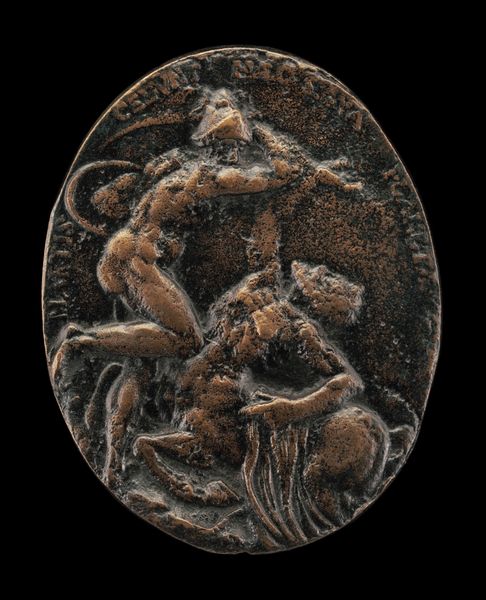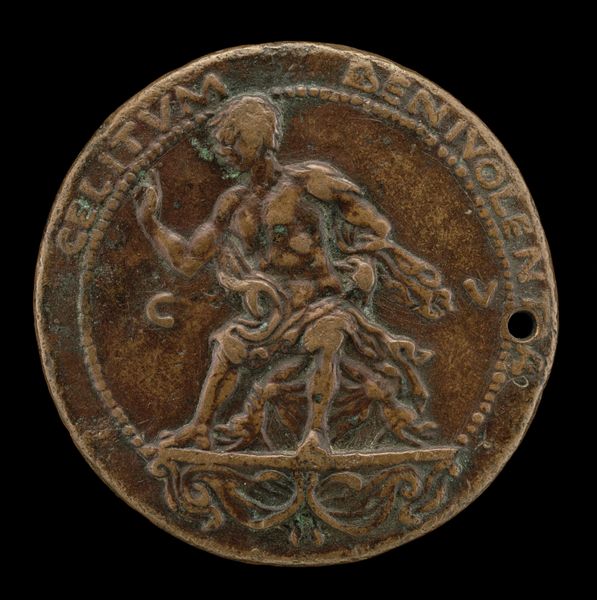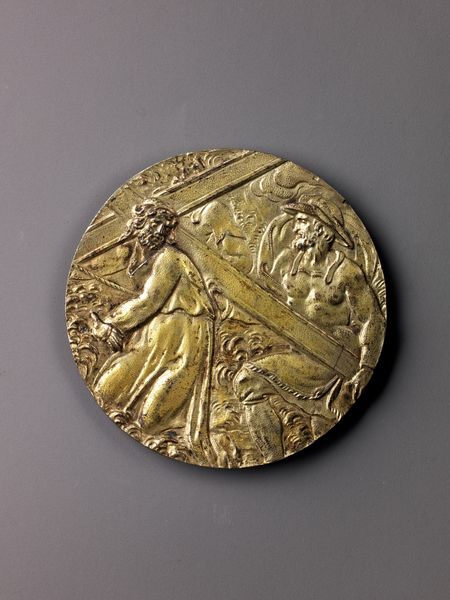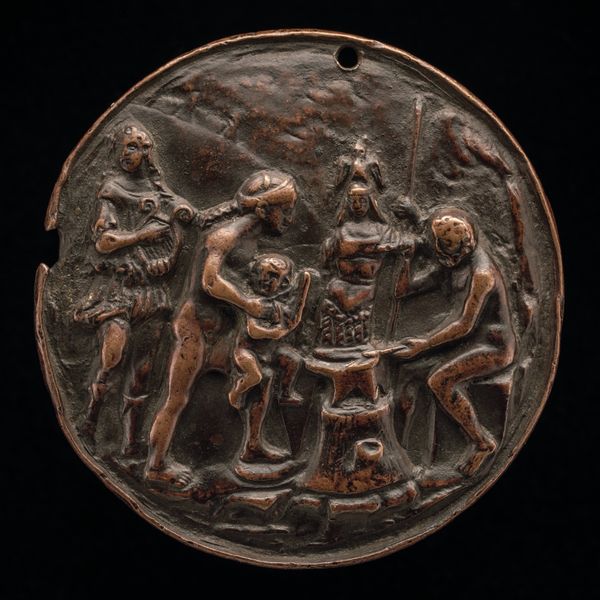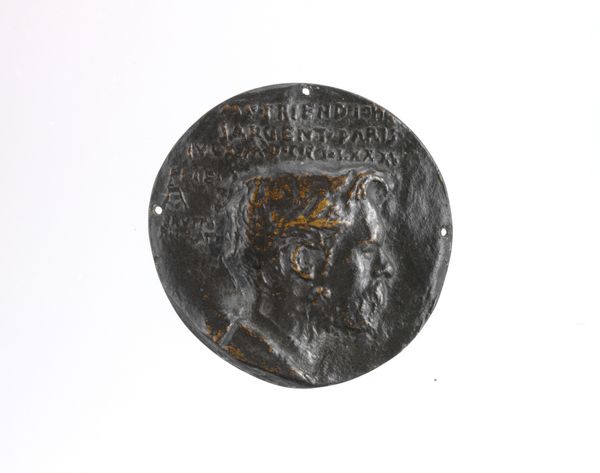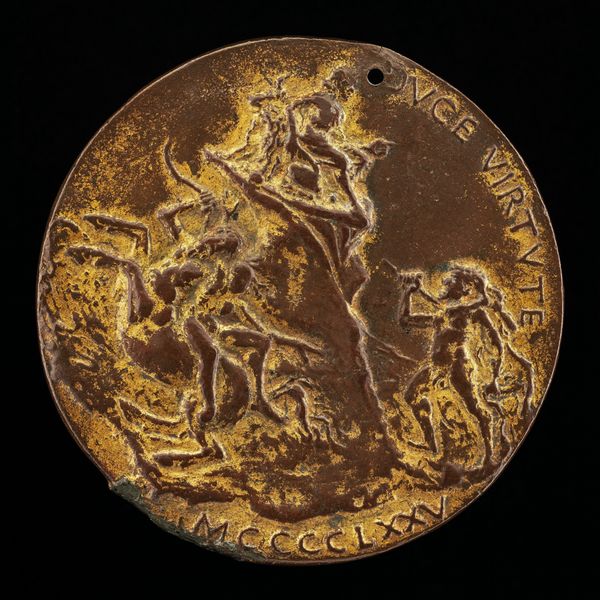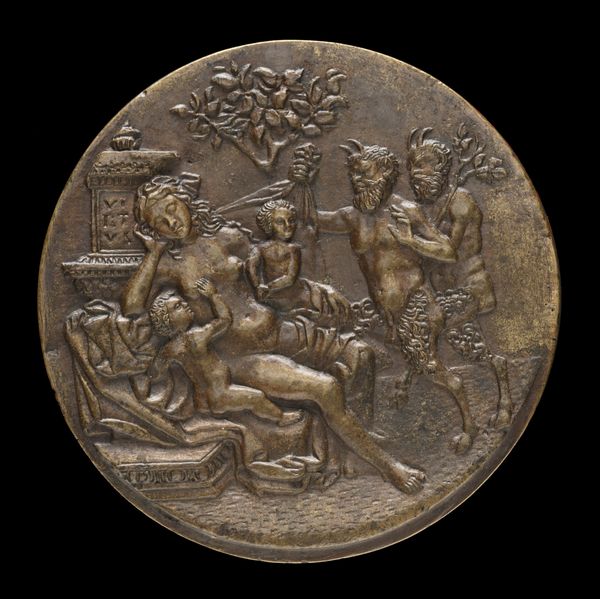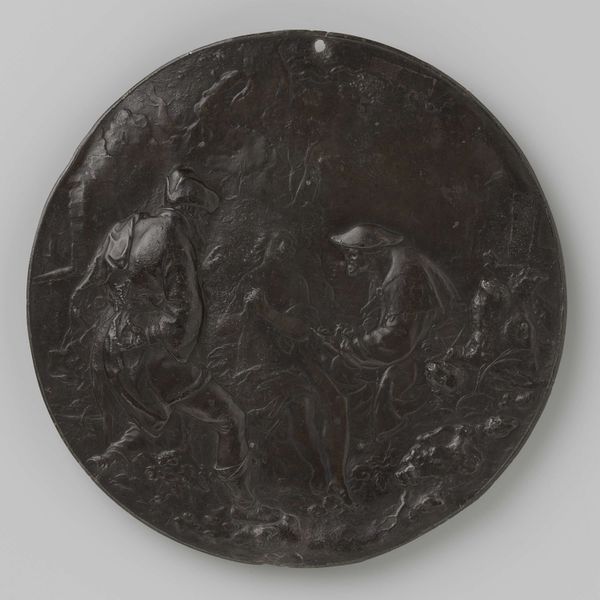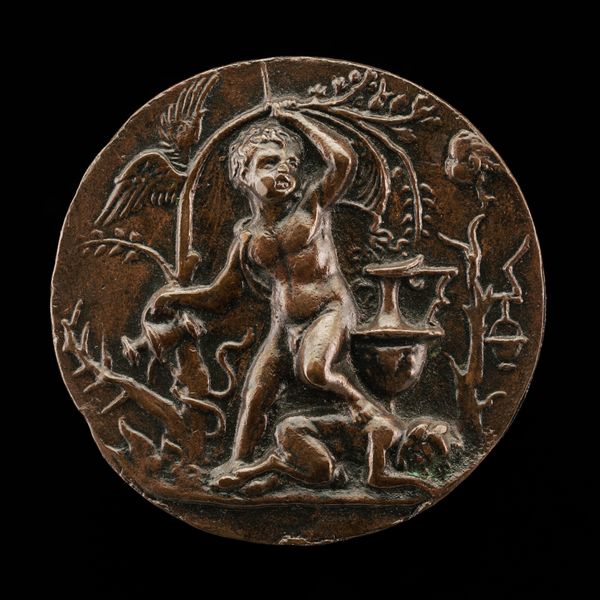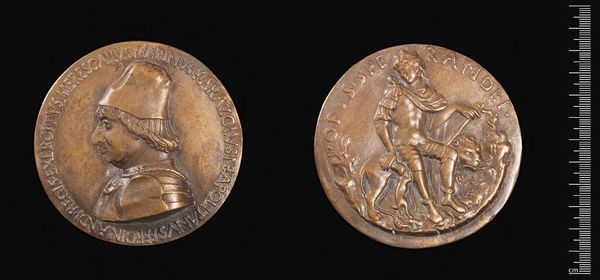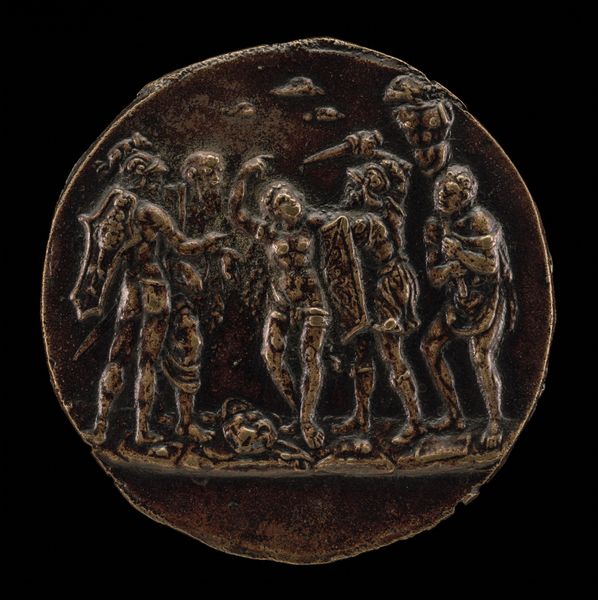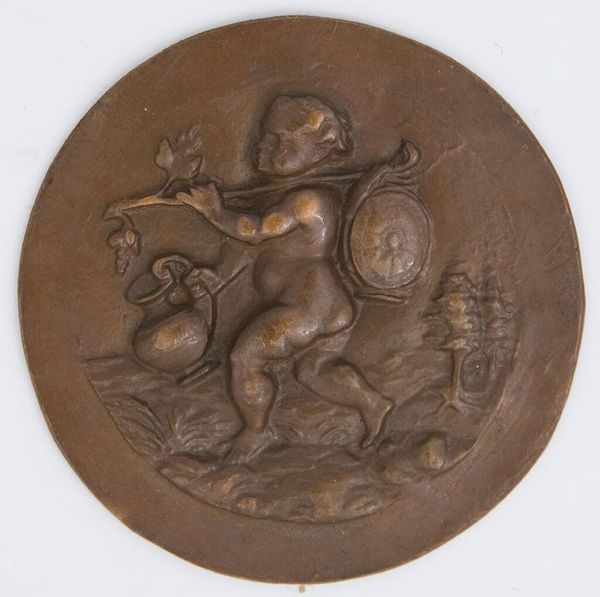
relief, bronze, sculpture
#
medal
#
narrative-art
#
sculpture
#
relief
#
bronze
#
figuration
#
11_renaissance
#
sculpting
#
sculpture
#
men
#
decorative-art
#
italian-renaissance
#
statue
Dimensions: Diameter: 2 3/8 in. (6 cm)
Copyright: Public Domain
Curator: At first glance, this bronze relief feels chaotic, a flurry of figures struggling within a defined space. There's a real sense of dramatic tension, would you agree? Editor: Absolutely. This is "Nessus Abducting Dejanira," dating back to the 16th century and attributed to Andrea Briosco, often called Riccio. We can see it currently resides at the Metropolitan Museum of Art. Its compact circular form packs quite the punch, wouldn't you say? Curator: It does. You have this centaur, Nessus, forcefully carrying Dejanira across what I presume is a river. Immediately, my mind goes to the power dynamics inherent in this depiction of abduction, and the problematic narratives it perpetuates. Considering that, the social codes it encodes become obvious as you continue looking at it. Editor: Indeed. This scene is steeped in classical mythology, drawn from Ovid’s "Metamorphoses," illustrating the moment Nessus attempts to kidnap Dejanira, the wife of Hercules, while ostensibly helping her cross the river. Hercules ultimately kills Nessus with a poisoned arrow. What I find striking is the way Riccio translated this scene into bronze, echoing ancient coins and medals while creating something altogether new for his Renaissance audience. It has an almost historical quality with how compact the relief seems. Curator: That act of translation is critical, I think. Whose stories were deemed worthy of preservation and display, and how do those choices reflect the values and anxieties of the time? To present this act within bronze only makes it more historically symbolic of that time period and its flaws. Looking at this piece is a reminder of how pervasive narratives of sexual violence are in art history. And we're forced to ask ourselves: what does our continued engagement with such imagery mean today? Is it possible to truly divorce it from its original social encoding? Editor: Precisely. These bronze reliefs and medals circulated among educated elites, functioning as status symbols and conversation pieces. For a 16th-century viewer, the appeal likely rested in a combination of admiration for classical learning, delight in the artist's virtuosity, and perhaps even a vicarious thrill from witnessing such a dramatic narrative play out. Curator: Perhaps we could also consider what it means to reinterpret ancient stories through the lens of our contemporary moment, and also analyze if that helps challenge and rewrite ingrained ideologies. Editor: Very valid. This invites viewers to consider their own role in perpetuating or dismantling these narratives, which are continually changing over time. Thanks for diving into those narratives, because, well, it made me think differently.
Comments
No comments
Be the first to comment and join the conversation on the ultimate creative platform.
